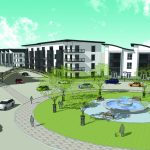 One of the recurring themes in the Gaston-Garland-Grand redevelopment discussion here has been that those of us who don’t own the land, put up the money, or negotiate the deals don’t have a say in what happens. This was particularly evident when Wamre posted about the project at the beginning of the week; a variety of comments in that post (and in earlier ones) more or less told him to mind his own business.
One of the recurring themes in the Gaston-Garland-Grand redevelopment discussion here has been that those of us who don’t own the land, put up the money, or negotiate the deals don’t have a say in what happens. This was particularly evident when Wamre posted about the project at the beginning of the week; a variety of comments in that post (and in earlier ones) more or less told him to mind his own business.
This is a wonderfully Dallas approach to real estate development, in which the developers know best and the rest of us should be grateful that they’ve decided to make a pile of money in our neighborhood. Can you imagine anyone saying that in Los Angeles or Manhattan? The other problem with it, of course, is that developers don’t know best, as all the empty strip centers in Dallas will attest. Even more important, they spend almost no time considering what their development means to the neighborhood in the long run.
That’s because developments have life spans, just like a person. They’re born, they thrive, they age, and then they die. Most developers aren’t around for much more than than the first part. They build a project, pat themselves on the back, and then sell it to someone else. They’re out of the deal long before things go bad.
If we’re worried about Gaston-Garland-Grand, it’s because we don’t want history to repeat itself. That corner used to be a suburban-style grocery store strip shopping center, anchored by a Winn-Dixie. And then Winn-Dixie went belly up, the center became old and outdated, and we got stuck with the Far West nightclub and a decade of pain and aggravation. In other words, we’ll have to live with the results of redevelopment long after the developer is gone. So why shouldn’t we want a quality project with a long life span?





